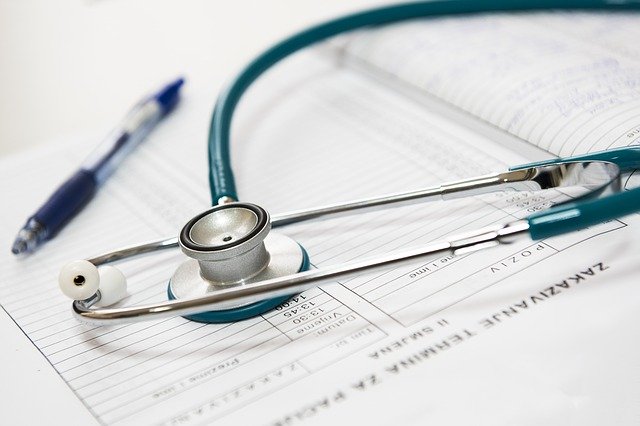The New Face of Medicine –care flow strategies developed during COVID
Care Flow Strategies during COVID
Keywords:
COVID-19, public health, telemedicine, dermatology, prevention
Abstract
The COVID-19 pandemic has redefined the practice of medicine. Adaptive care models to sustain access through integration of virtual and in person essential services have been implemented. Utilization of novel scheduling protocols can create a safe and efficient clinic experience for children and staff in this pandemic time.References
1. World Health Organization. WHO Coronavirus Disease (COVID-19) Dashboard. https://covid19.who.int/?gclid=EAIaIQobChMI_qX5tezc6QIVpRx9Ch0Gvwn-EAAYASABEgLzAPD_BwE. Accessed on: May 30, 2020.
2. Centers for Disease Control and Prevention. Cases in the U.S. https://www.cdc.gov/coronavirus/2019-ncov/cases-updates/cases-in-us.html. Accessed on: May 30, 2020.
3. Lee PI, Hu YL, Chen PY, Huang YC, Hsueh PR. Are children less susceptible to COVID-19? [published online ahead of print, 2020 Feb 25]. J Microbiol Immunol Infect. 2020;S1684-1182(20)30039-6. doi:10.1016/j.jmii.2020.02.011.
4. Viner RM, Whittaker E. Kawasaki-like disease: emerging complication during the COVID-19 pandemic [published online ahead of print, 2020 May 13]. Lancet. 2020;10.1016/S0140-6736(20)31129-6. doi:10.1016/S0140-6736(20)31129-6.
5. Riphagen S, Gomez X, Gonzalez-Martinez C, Wilkinson N, Theocharis P. Hyperinflammatory shock in children during COVID-19 pandemic. Lancet. 2020;395(10237):1607â€1608. doi:10.1016/S0140-6736(20)31094-1.
6. Verdoni L, Mazza A, Gervasoni A, et al. An outbreak of severe Kawasaki-like disease at the Italian epicentre of the SARS-CoV-2 epidemic: an observational cohort study [published online ahead of print, 2020 May 13]. Lancet. 2020;10.1016/S0140-6736(20)31103-X. doi:10.1016/S0140-6736(20)31103-X.
7. Kolivras A, Dehavay F, Delplace D, et al. Coronavirus (COVID-19) infection-induced
chilblains: A case report with histopathologic findings [published online ahead of print, 2020 Apr 18]. JAAD Case Rep. 2020;10.1016/j.jdcr.2020.04.011. doi:10.1016/j.jdcr.2020.04.011.
8. Recalcati S, Barbagallo T, Frasin LA, et al. Acral cutaneous lesions in the Time of COVID-19 [published online ahead of print, 2020 Apr 24]. J Eur Acad Dermatol Venereol. 2020;10.1111/jdv.16533. doi:10.1111/jdv.16533.
9. Landa N, Mendieta-Eckert M, Fonda-Pascual P, Aguirre T. Chilblain-like lesions on feet and hands during the COVID-19 Pandemic. Int J Dermatol. 2020;59(6):739â€743. Doi:10.1111/ijd.14937.
10. Tammaro A, Adebanjo GAR, Parisella FR, Pezzuto A, Rello J. Cutaneous manifestations in COVID-19: the experiences of Barcelona and Rome [published online ahead of print, 2020 Apr 24]. J Eur Acad Dermatol Venereol. 2020;10.1111/jdv.16530. doi:10.1111/jdv.16530.
11. Bouaziz JD, Duong T, Jachiet M, et al. Vascular skin symptoms in COVID-19: a rench
observational study [published online ahead of print, 2020 Apr 27]. J Eur Acad Dermatol Venereol. 2020;10.1111/jdv.16544. doi:10.1111/jdv.16544.
12. Galván Casas C, Català A, Carretero Hernández G, et al. Classification of the cutaneous
manifestations of COVID-19: a rapid prospective nationwide consensus study in Spain with 375 cases [published online ahead of print, 2020 Apr 29]. Br J Dermatol. 2020;10.1111/bjd.19163. doi:10.1111/bjd.19163.
13. American Academy of Dermatology. Coronavirus resource center. https://www.aad.org/member/practice/coronavirus. Accessed on: May 30, 2020.
14. Center for Disease Control and Prevention. Prepare your practice for COVID-19. https://www.cdc.gov/coronavirus/2019-ncov/hcp/preparedness-resources.html. Accessed on: May 30, 2020.
15. Smith AC, Thomas E, Snoswell CL, et al. Telehealth for global emergencies: Implications for coronavirus disease 2019 (COVID-19) [published online ahead of print, 2020 Mar 20]. J Telemed Telecare. 2020;1357633X20916567. doi:10.1177/1357633X20916567.
16. Latifi R, Doarn CR. Perspective on COVID-19: Finally, Telemedicine at Center Stage [published online ahead of print, 2020 May 14]. Telemed J E Health. 2020;10.1089/tmj.2020.0132. doi:10.1089/tmj.2020.0132.
2. Centers for Disease Control and Prevention. Cases in the U.S. https://www.cdc.gov/coronavirus/2019-ncov/cases-updates/cases-in-us.html. Accessed on: May 30, 2020.
3. Lee PI, Hu YL, Chen PY, Huang YC, Hsueh PR. Are children less susceptible to COVID-19? [published online ahead of print, 2020 Feb 25]. J Microbiol Immunol Infect. 2020;S1684-1182(20)30039-6. doi:10.1016/j.jmii.2020.02.011.
4. Viner RM, Whittaker E. Kawasaki-like disease: emerging complication during the COVID-19 pandemic [published online ahead of print, 2020 May 13]. Lancet. 2020;10.1016/S0140-6736(20)31129-6. doi:10.1016/S0140-6736(20)31129-6.
5. Riphagen S, Gomez X, Gonzalez-Martinez C, Wilkinson N, Theocharis P. Hyperinflammatory shock in children during COVID-19 pandemic. Lancet. 2020;395(10237):1607â€1608. doi:10.1016/S0140-6736(20)31094-1.
6. Verdoni L, Mazza A, Gervasoni A, et al. An outbreak of severe Kawasaki-like disease at the Italian epicentre of the SARS-CoV-2 epidemic: an observational cohort study [published online ahead of print, 2020 May 13]. Lancet. 2020;10.1016/S0140-6736(20)31103-X. doi:10.1016/S0140-6736(20)31103-X.
7. Kolivras A, Dehavay F, Delplace D, et al. Coronavirus (COVID-19) infection-induced
chilblains: A case report with histopathologic findings [published online ahead of print, 2020 Apr 18]. JAAD Case Rep. 2020;10.1016/j.jdcr.2020.04.011. doi:10.1016/j.jdcr.2020.04.011.
8. Recalcati S, Barbagallo T, Frasin LA, et al. Acral cutaneous lesions in the Time of COVID-19 [published online ahead of print, 2020 Apr 24]. J Eur Acad Dermatol Venereol. 2020;10.1111/jdv.16533. doi:10.1111/jdv.16533.
9. Landa N, Mendieta-Eckert M, Fonda-Pascual P, Aguirre T. Chilblain-like lesions on feet and hands during the COVID-19 Pandemic. Int J Dermatol. 2020;59(6):739â€743. Doi:10.1111/ijd.14937.
10. Tammaro A, Adebanjo GAR, Parisella FR, Pezzuto A, Rello J. Cutaneous manifestations in COVID-19: the experiences of Barcelona and Rome [published online ahead of print, 2020 Apr 24]. J Eur Acad Dermatol Venereol. 2020;10.1111/jdv.16530. doi:10.1111/jdv.16530.
11. Bouaziz JD, Duong T, Jachiet M, et al. Vascular skin symptoms in COVID-19: a rench
observational study [published online ahead of print, 2020 Apr 27]. J Eur Acad Dermatol Venereol. 2020;10.1111/jdv.16544. doi:10.1111/jdv.16544.
12. Galván Casas C, Català A, Carretero Hernández G, et al. Classification of the cutaneous
manifestations of COVID-19: a rapid prospective nationwide consensus study in Spain with 375 cases [published online ahead of print, 2020 Apr 29]. Br J Dermatol. 2020;10.1111/bjd.19163. doi:10.1111/bjd.19163.
13. American Academy of Dermatology. Coronavirus resource center. https://www.aad.org/member/practice/coronavirus. Accessed on: May 30, 2020.
14. Center for Disease Control and Prevention. Prepare your practice for COVID-19. https://www.cdc.gov/coronavirus/2019-ncov/hcp/preparedness-resources.html. Accessed on: May 30, 2020.
15. Smith AC, Thomas E, Snoswell CL, et al. Telehealth for global emergencies: Implications for coronavirus disease 2019 (COVID-19) [published online ahead of print, 2020 Mar 20]. J Telemed Telecare. 2020;1357633X20916567. doi:10.1177/1357633X20916567.
16. Latifi R, Doarn CR. Perspective on COVID-19: Finally, Telemedicine at Center Stage [published online ahead of print, 2020 May 14]. Telemed J E Health. 2020;10.1089/tmj.2020.0132. doi:10.1089/tmj.2020.0132.

Published
2020-06-12
How to Cite
Jacob, S. (2020). The New Face of Medicine –care flow strategies developed during COVID: Care Flow Strategies during COVID. International Journal of Integrative Pediatrics and Environmental Medicine, 5(1), 34 -37. https://doi.org/10.36013/ijipem.v5i1.83
Issue
Section
Editorial
Policy for Articles with Open Access
Authors who publish with this journal agree to the following terms:
Authors retain copyright and grant the journal right of first publication with the work simultaneously licensed under a Creative Commons Attribution License that allows others to share the work with an acknowledgement of the work's authorship and initial publication in this journal.
Authors are permitted and encouraged to post links to their work online (e.g., in institutional repositories or on their website) prior to and during the submission process, as it can lead to productive exchanges, as well as earlier and greater citation of published work.





3.jpg)
